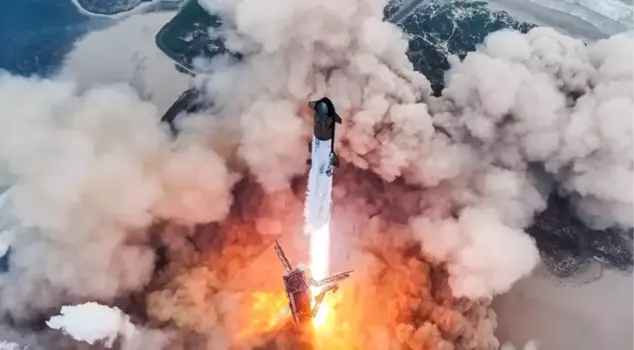
07.06.2024 15:51
Elon Musk's SpaceX company's Starship rocket has completed its fourth test flight. This flight is seen as an important step for Musk's plans to colonize Mars and NASA's efforts to send humans to the Moon. The rocket was launched from the Starbase facility in Texas and suffered significant damage during reentry. However, it successfully completed its first landing in the Gulf of Mexico. The rocket's booster, Super Heavy, also landed successfully in the water.
SpaceX, the company founded by Elon Musk, launched the Starship from the Starbase facility in Boca Chica, Texas on June 6 at 09:45 (EDT) (13:45 BST). During the fourth test flight, parts of the rocket broke apart in flames during reentry, and ground crews described it as a "light show."
The Starship sustained significant damage during reentry, and one of the wings appeared to be about to break off. No signs were received from the rocket after reentry, so its condition is still unknown. Nevertheless, the rocket managed to make its first landing in the Gulf of Mexico.
SPACEX'S STARLINK SATELLITES WERE USED
The team used SpaceX's Starlink satellites to maintain communication, which had experienced interruptions during previous reentries. Today's test flight also demonstrated the successful water landing of the Super Heavy booster. SpaceX said that the Starship flew further than its previous test flight.
Developed under a $1.15 billion contract with NASA, the Starship refers to the reusable stainless steel upper part of the rocket. The lower part of the rocket is known as the Super Heavy booster. The 33-engine, $3 billion mega-rocket is the largest and most powerful vehicle to have successfully launched from the ground, capable of producing 7.6 million kilograms of thrust. This is nearly twice the current record held by NASA's Space Launch System (SLS).
In the third test flight conducted in March, the Starship and Super Heavy booster flew faster and farther than ever before. In the second launch attempt in November, it exploded approximately 10 minutes after liftoff, breaking records. The spacecraft achieved many mission objectives and made the flight successful despite breaking apart during reentry. One of the major goals was to perform in-flight fuel transfer, which is crucial for enabling human lunar landings and ensuring astronauts have enough fuel to reach Mars.